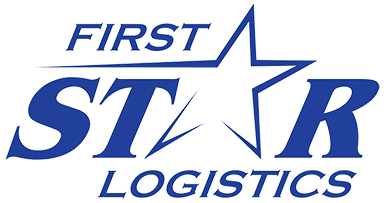Truckload freight rates are the cost per mile to ship cargo. Freight rates are determined by market forces such as supply and demand, fuel prices, distances traveled, terminal costs, and more. The mode of transport, form of cargo, dimensional weight of the goods, and distance also play factors into the freight rate.
Like almost everything since 2020, truckload freight rates have fluctuated. Let’s take a closer look at the truckload freight rates for 2020 and 2021, the new trends to watch for truckload freight rates in 2022, and all the important information you should know about truckload freight rates.
Truckload Freight Rates in 2020
In January of 2020, the national flatbed spot rates were at $2.17 and contract rates were at $2.53. National reefer spot rates were at $2.24 and contract rates were at $2.44.
With the start of the COVID-19 pandemic and the initial wave of lockdowns in March of 2020, the pantry-stocking frenzy resulted in surging freight volumes. The rates remained about the same until April of 2020, when the freight volumes crashed. Thousands of trucking companies filed for bankruptcy, millions of trucking company agents became unemployed, diesel prices hit rock bottom, and fuel revenue percentages plummeted. In May of 2020, national flatbed spot rates fell to $1.9 and contract rates fell to $2.37. National reefer spot rates decreased to $1.93 and contract rates decreased to $2.03. Concerned truckers gathered in Washington, D.C. to protest the low freight rates. In the early fall, diesel prices dropped by $0.34/gallon and dry van linehaul rates increased substantially.
By the end of 2020, national flatbed spot rates exceeded 2019 numbers at $2.48, and contract rates were comparable with 2019 numbers at $2.60. Reefer rates increased measurably as well, and both contact and spot rates topped the 2019 numbers.
Truckload Freight Rates in 2021
Like 2020 ended, 2021 began with overall rates equal to or higher than pre-pandemic figures. Economic growth continued throughout the year and the demand for freight transport was high. Overall freight volumes and truckload tonnage were increasing throughout the year.
For some types of freight the demand was higher than others. Retail, construction, and manufacturing freight experienced high demand. On the other hand, automotive freight experienced a steep drop in demand because the automotive industry was, and continues to be, dramatically stunted by the global semiconductor chip shortage.
The inventory shortages, supply chain disruptions, and congested ports prompted many transporters to move freight even if the load is not yet at capacity. To combat the challenges, freight companies prioritized on-time deliveries over in-full loads. This subsequently increased the spot market, which is ideal for facilitating short lead times. Because they are one-time agreements that typically come with tight deadlines, spot transport rates are usually higher than contract rates. The frequent occurrence of routing guide failures also lead to increased rates. When the primary carrier rejects a load, shippers ultimately end up moving loads with more expensive carriers.
Truckload Freight Rates in 2022
At the start of 2022, spot rates topped the charts. Although the Omicron variant sidelined many intermodal truck drivers, the rates have remained elevated and the numbers are likely to hold for most of 2022. Because truckload freight utilization is high and likely to remain so, it is unlikely that the spot rates will decrease. Limited driver availability, likelihood of high demand for freight transportation, and elongated inventory replenishment timelines also contribute to these predictions.
However, multiple factors could inspire a downward shift in 2022 truckload freight rates. If freight volumes decrease or more drivers and equipment become available, the rates could begin to decrease.
What You Should Know About Truckload Freight Rates
There are many different types of freight and many options for moving loads. However, with sustained capacity limitations and increases in demand, now is the time to choose the freight carrier with an extensive network of resources who can deliver the best service at the best possible rate.
For all of your questions about truckload freight rates, First Star Logistics has the answers. First Star Logistics is a unique, asset-based global logistics provider with more than 60 years of experience. Companies across the globe trust First Star Logistics to transport their freight by arranging and securing space for shipments between states and countries. First Star Logistics clients benefit from a comprehensive North American network and global reach, along with time and money-saving technology that delivers. Their in-house freight brokerage department ensures customers’ shipments are delivered promptly and accurately. For the best truckload freight rates and excellent customer service, contact First Star Logistics today!



